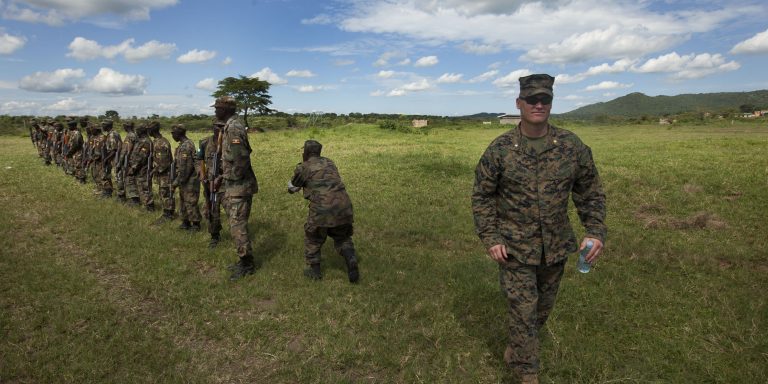INTELBRIEF
November 22, 2017
TSC IntelBrief: A Deepening U.S. Military Involvement in Somalia

• The U.S. military is getting deeper into combat operations in Somalia, doubling the number of ground troops and nearly doubling the number of air strikes launched this year.
• Somalia faces both an entrenched al-Qaeda affiliate, al-Shabaab, and the so-called Islamic State.
• The African Union’s military mission in Somalia is gradually drawing down while Somali security forces require additional training and equipment.
• With Somalia’s government unable to restore security, increased U.S. involvement in Somalia will likely go on for years to come.
The U.S. has doubled its military presence in Somalia over the past year and will likely expand that presence further, as it pursues a two-track mission of building up the country’s security forces while conducting raids and airstrikes against al-Shabaab and the so-called Islamic State. It’s essentially the same mission U.S. forces are conducting with limited success in Afghanistan, although on a far smaller scale. The nature and scope of the problems plaguing Somalia, including clan divisions, weak governance and extreme poverty and drought, are similar to those in Afghanistan, where Washington and its partners have struggled for sixteen years to bring some measure of lasting stability and security.
Al-Qaeda’s Somali affiliate, al-Shabaab, incurred serious loses in recent years, as the African Union Mission to Somalia (AMISOM) worked with Somali forces and U.S. air power to degrade the terrorist insurgency. Yet al-Shabaab is strong outside Somalia’s major cities and maintains the ability to conduct mass-casualty attacks in the capital, Mogadishu. A truck bombing in Mogadishu October 14th killed over 350 people and was the most lethal terrorist attack in years. Al-Shabaab will likely increase in strength as the 20,000 troop AMISOM mission draws down before its scheduled end in 2020. Meanwhile, Somali security forces have been unable to hold the gains made with AMISOM, and will require, as have their counterparts in Afghanistan, an extensive ‘train and equip’ period, with essentially no outer time frame for completion.
On November 3, the U.S. conducted airstrikes in northern Somalia against fighters from the Islamic State. This was the first time the U.S. targeted the group in Somalia; the Pentagon announced another airstrike against the Islamic State, also in the north, on November 12. As with the civil war in Yemen, persistent conflict and lawlessness has drawn fighters from the Islamic State into a country with a long-established al-Qaeda affiliate. Reports estimate there are perhaps 200 Islamic State fighters in northern Somalia — a dramatic increase over the past year, though it is unclear how much traction the group will gain. In Afghanistan, the Islamic State has expanded in the face of increased U.S. and Afghan military pressure, as it has in Yemen. With a smaller military force in opposition, the Islamic State could establish a foothold in Somalia, a country that desperately doesn’t need another violent extremist group launching attacks.
As the scope of the U.S. military mission in Somalia expands, due to the enormity of the military, social, governmental, economic, and environmental challenges it faces, the U.S. will likely respond with more airstrikes, combat advisors and Special Operations Forces raids. As it has in Afghanistan, U.S. strategy will focus on the military while waiting for improvements in civil society that have yet to materialize and show no signs of doing so in the foreseeable future. Somalia’s security challenges are both urgent and undeniable but they are fueled and intensified by larger issues that can’t be resolved through the use of air power. In fact, a rise in civilian deaths caused by air strikes — inevitable, despite claims to the contrary — will only make matters worse. It’s a cycle already seen in Yemen and Afghanistan, one the U.S. is unable to break with its current approach.
For tailored research and analysis, please contact: info@thesoufancenter.org
.
.